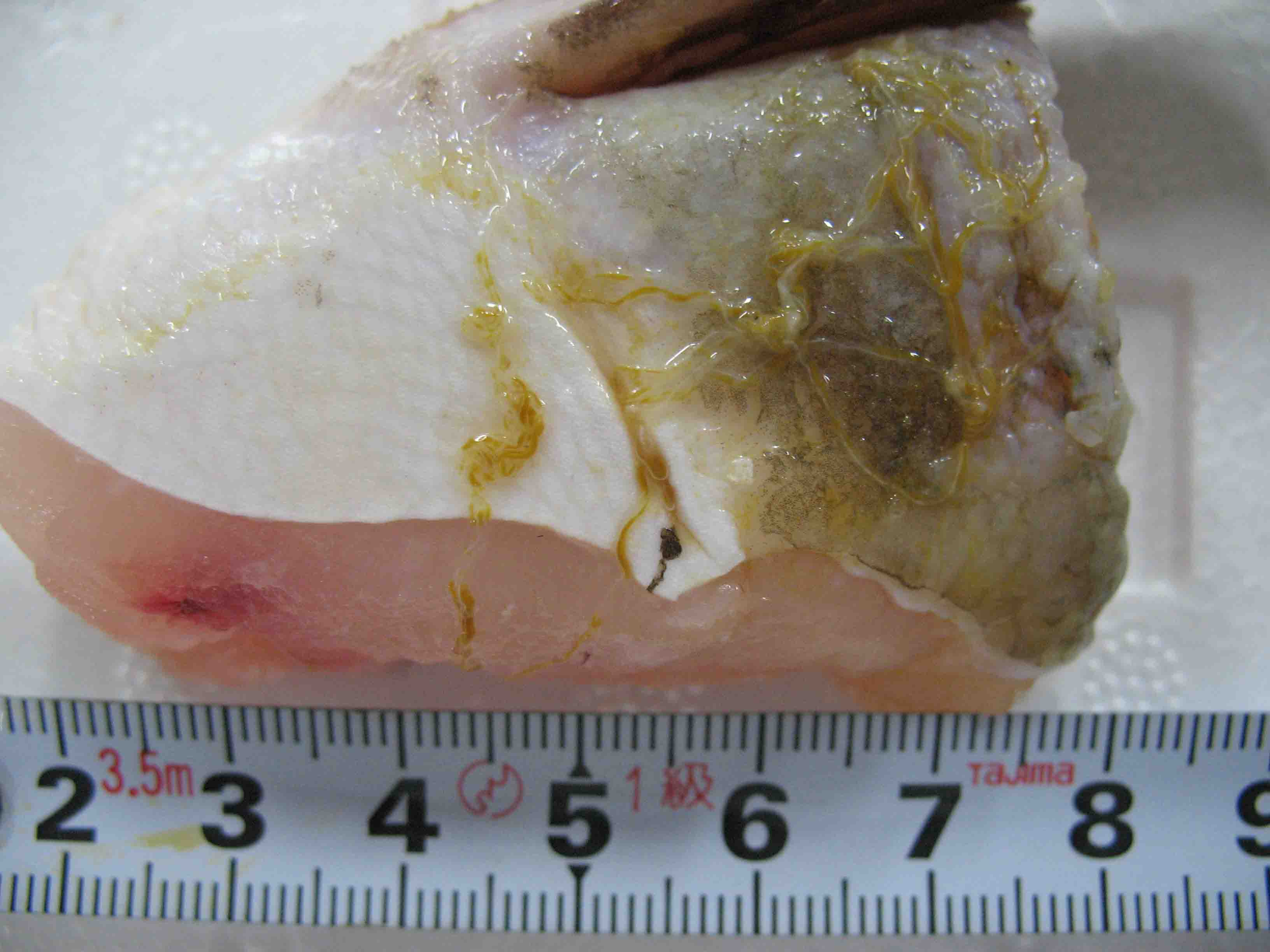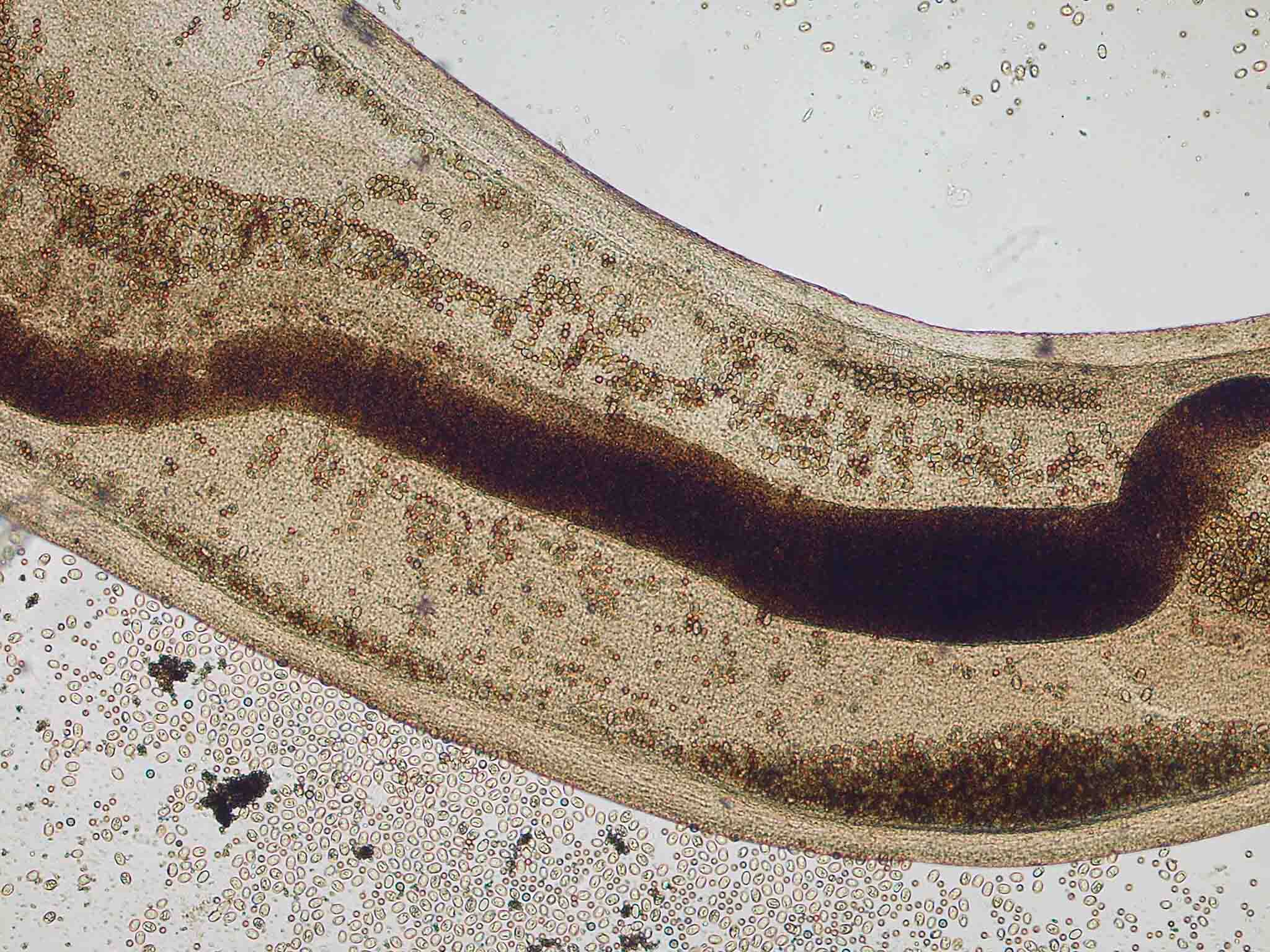

Fig. 3. Parasite eggs (left below) are released from the body.

| Parasite | Philometra sp. |
|---|---|
| Taxonomy | Nematoda, Secernentea, Camallanida |
| Host | Longtooth grouper (Epinephelus bruneus) |
| Infection site | Possibly muscle |
| Clinical sign | A parasite was observed on the surface of the fillet of longtooth grouper (Fig. 1). |
| Parasitology | The parasite is yellowish in color and cylindrical (ca. 1.0 mm in diameter; more than 10 cm in length) (Fig. 2). The body was filled with eggs which spilled from the cut surface (Fig. 3). |
| Pathology | The pathogenicity to fish is considered to be low. |
| Health hazard | Because all Philometrid nematodes are not infectious to human, it is harmless in food hygiene. |
| Diagnosis | Philometra can be readily differentiated from Philometroides by the presence of cuticular bosses in the latter. |
| Other information | Philometra pinnicola and Philometra ocularis have been known to parasitize the fin of Hong Kong grouper Epinephelus akaara and the orbital cavity of convict grouper E. septemfasciatus, respectively. However, these are different species from Philometra from E. bruneus due to their different infection site (Ogawa, 2004). |
| References | Ogawa, K. (2004): Metazoan diseases. Infectious and
parasitic diseases of fish and shellfish. (Wakabayashi, H. and K. Muroga), Koseisha koseikaku, pp. 381-405. (In Japanese) |

Fig. 2. The worm form the longtooth grouper
Fig. 1. Philometra found on the surface of longtooth grouper